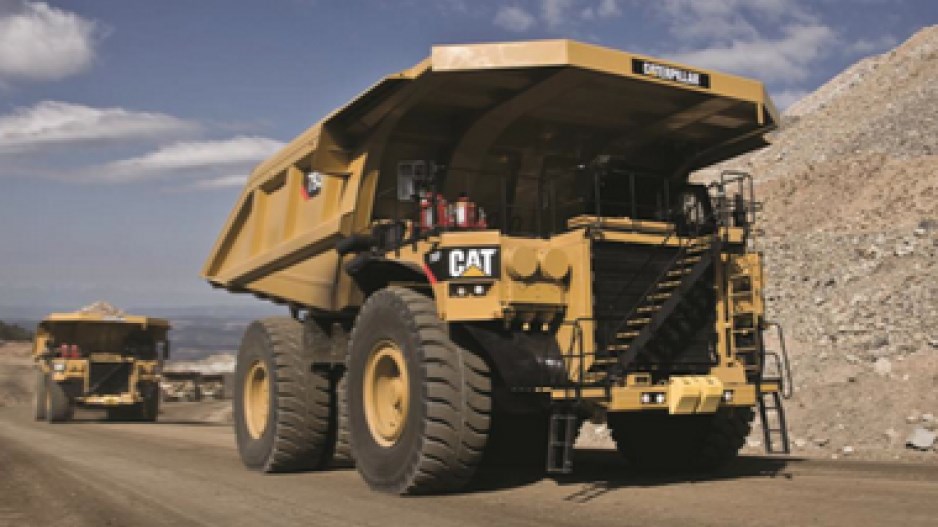B.C. natural resource sectors would be wise to strengthen their public relations teams this year; there’ll be no shortage of questions in 2015 about the future of the province’s mines, mills and pipelines.
Mining
A key story will be the ongoing downturn in the metals and minerals sector amid softening in Asia’s growth prospects.
At the time of writing this, the copper price had hit a five-year low of US$2.61 per pound, steel-making coal and molybdenum prices had dropped far enough to force mine closures in northern B.C. and the gold price, sitting at roughly US$1,219 per ounce, was nowhere near the $1,900 ceiling it hit in the heady days of 2011.
Downward pressure on these commodities had a direct effect on northern B.C. in 2014, notably in Tumbler Ridge, where mine closures caused the unemployment rate to spike.
In December, the reduced moly prices caused Thompson Creek Metals (TSX:TCM) to suspend operations at its Endako mine near Fraser Lake, affecting some 300 employees in a town of 1,100 just before the holidays.
On the copper side, the good news is that prices haven’t dropped low enough yet to force closures elsewhere in the province.
But they’re not strong enough to warrant major expansions or new mines in B.C. (with the exception of Red Chris, scheduled to reach commercial production this year).
Many of the proposed mines in this province are copper-gold porphyries located in extremely challenging terrain that require strong commodity prices and huge cash flow to move beyond the feasibility stage.
The drop in the coal market is also having an effect on the region’s transportation sector.
As of November 2014, overall coal shipments at Prince Rupert’s Ridley terminal were down 38% year-to-date, decreases that are no doubt also being felt along B.C.’s rail lines.
Reduced volume at Ridley has forced the port to re-evaluate its coal terminal expansion plans, and there hasn’t been much news recently from the federal government regarding the sale of the terminal.
Energy
On the energy side, whether B.C. will develop an LNG industry in 2015 is the question everyone wants an answer to.
The acronym FID (final investment decision) has been tossed around in media stories so often in recent months that it’s become the mythical harbinger of deliverance for the B.C. economy.
An FID is only one step in a capital-intensive, multi-year process to bring LNG to fruition.
The big story in LNG these days is the oil price.
As of this writing, crude oil prices were hovering around US$51 a barrel.
With natural gas prices indexed to oil in Asia (the market B.C. LNG is proposed to serve), a continued decrease in the price per barrel affects long-term sales contract negotiations that will underwrite B.C. LNG.
Also, proponents who rely on cash flow from the oil side of their business will be more cautious about major capital expenditures this year as the crude price plummet cuts into their profits.
As the oil price downturn stretches from weeks into months, another story that will gain momentum is whether there’s still a need for oil pipelines to the West Coast.
Forestry
A bright spot in the north this year, however, appears to be forestry.
Last year, the impact of mill closures in Houston and Quesnel reminded us that forestry is still a major player in B.C., even if it doesn’t garner the headlines it once did.
Industry analysts have been predicting a lumber market upturn for several years now, and it appears we’re finally in the midst of it.
An ongoing reduction in B.C.’s interior timber harvest coupled with increased U.S. housing demand supports strong two-by-four prices in 2014.
It also helps that Quebec has reduced its annual cut 35% since 2004, improving B.C.’s position to supply the U.S. market.
That’s good news for mills across the province and the logging and contracting companies that support them.
Still, B.C.’s lumber manufacturers remain challenged to source railcars to ship their products to market; it’s not getting any easier to find trucks to shoulder the load either.
Ongoing issues
In addition to ramifications for B.C.’s mining industry from the Mount Polley tailings dam collapse study and the implications of the Supreme Court’s Tsilhqot’in decision for any land-based project, a growing amount of media attention is being paid to several marine issues, including concerns over the cleanup of the abandoned cannery at Namu on the central coast and the proposed sinking of the former HMCS Annapolis near Gambier Island.
Oh, and there’s an $8.8 billion project called Site C scheduled to begin construction this summer.
In short, get your communications plans ready; 2015 will be anything but boring. •
Joel McKay ([email protected]) is director, communications, at Northern Development Initiative Trust, a non-profit organization that stimulates economic growth throughout northern B.C.



